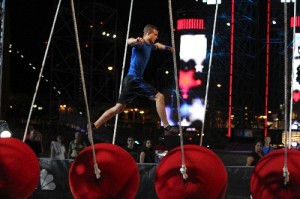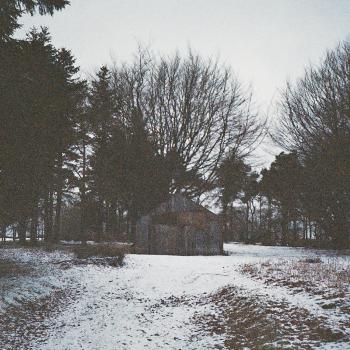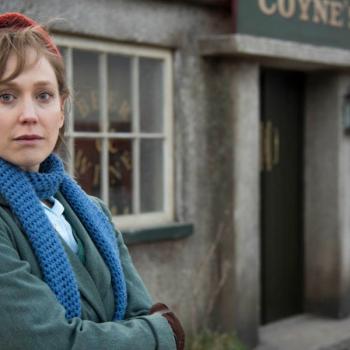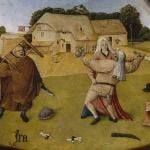 Loving my fellow man has never come easy. Candidly speaking, I love a small contingency of folks, am fond of a goodly portion of others, indifferent to the vast majority, with the trailing remainder either disliked or outright despised.
Loving my fellow man has never come easy. Candidly speaking, I love a small contingency of folks, am fond of a goodly portion of others, indifferent to the vast majority, with the trailing remainder either disliked or outright despised.
That doesn’t bode well for me in the long-range view of my religion, I admit. I read Dante’s Purgatorio—which is what I’m shooting for, purgatory, for starters—and got a little squeamish when I saw the mountain was only seven stories high. I’m hoping they’ve added a few more since Dante got the grand tour, because I’m not sure seven levels of purification will do the job.
However, by way of divine grace, I’ve been provided with something that should help. I’ve discovered a means by which I can learn to love my fellow man. And it all has to do with a reality show called American Ninja Warrior.
If you haven’t seen this thing, you should. I’m not particularly high-minded when it comes to my entertainments, but this show will hook anybody, even Lord Downton and Lady Abbey.
The basic premise is as follows: Amateur athletes from every walk of life take on fiendishly designed obstacle courses of increasing difficulty—phases I through IV—In hopes of advancing to the very summit of “Mount Midoriyama,”(the course’s name—the original show started in Japan) where they’ll be acknowledged as American Ninja Warriors (you get half a million for completing the whole thing, but nobody’s ever completed phase III).
The set-up looks like a huge fair grounds, with lots of lights, water, fire, and colorful erector-set looking obstacles, treacherous in the planning and ominous in the naming: the “warped wall,” the “floating doors,” the “ultimate cliffhanger,” the “jumping spider,” the “half-pipe attack,” etc. In the early phases, the whole thing is timed. If competitors actually manage to complete the course without falling into the water, they have to press a big red button at the end of the line before the countdown clock reaches zero.
Now, here’s the theological part (stop that laughing—God moves in mysterious ways, none more mysterious than this Vegas-style reality show): just as the big crowd cheers at the entrance of a contestant, with his family and friends identified by the commentators, the show gives you a little bio, kind of American Idol style.
Of course, this is meant to make you identify with the warrior. You learn the personal obstacles that he’s overcome, the dedication that he’s put into the training, the particular diseases or adversities that he’s labored against. You’re supposed to be touched.
I am not; not really; not all that much, at any rate. I roll my eyes, jerk that I am, and settle into my old routine of sarcastic mock-commentary. Some of the people are very likeable indeed (like Joe Moravsky, a sunny weatherman with a new bride), and they may win my admiration.
But by and large all that cheery, “can-do,” mono-focus brings out the worst in me. And when any of the competitors proves conceited—one guy was a model, and boy did he love himself—I’m fit to be tied.
They rip their shirts off and pose for the crowds; they flip their hair back and mug for the camera. So when the bio tape is over, I find myself in full adversary mode, hoping that the obstacle course does its worst. Let the floating door pop him in his fat mouth; let the jumping spider hurdle him headlong into the pit of despair. May Adonis crash and his dreams go up in a dumpster fire.
But then the clock starts, and the contestant begins to go through his paces—over the swinging bridges, upside down and by the tips of his fingernails—and by God, no matter who it is—no matter how much I disliked his background story and sneered at his vanity, I find myself pulling for him; intensely.
I’m not the only one either; I watched this show in a room full of fifteen people—men, women, and children, rich and poor—and to the one, we were all in accord. It could’ve been our deepest darkest nemeses—the people from our pasts whose faces we conjure up whenever we want to stew in hate— put on that obstacle course, and we would’ve been all one nerve and muscle and prayers for success.
I suppose it can be explained by the herd instinct. I suppose you could put all this down to a sense of human camaraderie, atavistic and primal. I suppose.
But I like to think there’s something more salutary in this lesson. In watching a fellow man—whoever he may be, however irksome he is when he opens his mouth—faced with the hardest of challenges, laboring to hang on and survive before the clock counts him down and out, something stirs inside us. From the safe distance on the ground (or sofa), when beholding another in peril, a noble sense of kinship is quickened.
Now, the truth is, as we all agree, real life is a lot harder than Mount Midoriyama. One is never prepared for it, no matter how hard he trains. Some of the obstacles can be seen, but others present themselves from out of nowhere. No one ever knows what he’s going to get in any given day, and the perils of family, health, work, and money put swinging bridges and warped walls to shame.
I would do well to see my fellow man this way—however aggravating he may be—as one who grapples mightily with a course that is never easy, and more importantly, never ends.
There’s a saying erroneously attributed to Philo of Alexandria that holds true regardless of who actually thought it up: “Be kind, for everyone you meet is fighting a great battle.”
True, that—they’re fighting hard all about us, the saints are, whether on Mount Midoriyama or not.
A.G. Harmon teaches Shakespeare, Law and Literature, Jurisprudence, and Writing at The Catholic University of America in Washington, D.C. His novel, A House All Stilled, won the 2001 Peter Taylor Prize for the Novel.















